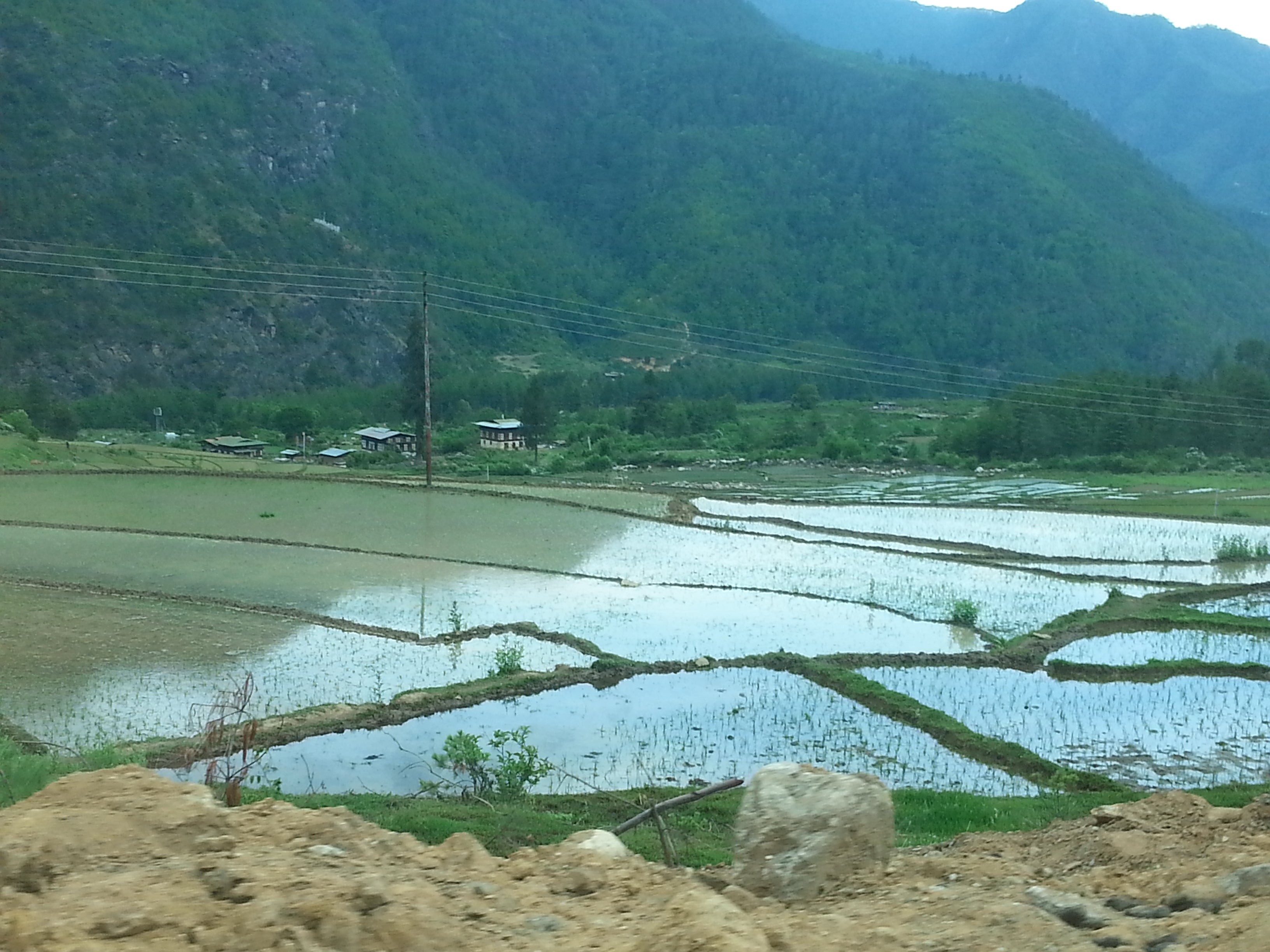By Elizabeth Ridolfi
This is a photograph of the rice fields in Bhutan, where I did a 6- week field research program through the School for Field Studies in Summer 2014. Bhutan is a small, Himalayan country located near India and Nepal.The spread of rice cultivation in Bhutan is an illustration the effect of global climate change. Rice typically grows in low lying, relatively warm areas with high precipitation certain times of the year. The vast majority of the country’s land area is above 6000 feet, which is considered too high of an elevation for rice cultivation under normal circumstances. For much of the country’s history a single type of rice has been grown in the Paro Valley of Bhutan, where while it is warm and humid much of the year. However, this is changing. While interviewing a farmer in the Jakar province, which is at roughly 8000 feet in elevation, he mentioned that it is getting warmer and he might be able to grow rice soon. Normally, the growing season in that area is much too short for rice but as the temperature warms, it could soon be possible. However, the type of rice the farmer was speaking of was not the native cultivar, but an imported variety from India that is used as a cash crop. India on average is much warmer than Bhutan, so the idea that a non-native variety of rice is being grown in an area where previously the climate was inappropriate for the native variety illustrates climate change. When my research group asked the farmer if he was worried about this climate change, he said yes, but also said the extra revenue from the rice would make his income much more dependable. This small incident with the rice hopefully illustrates some of the complex effects of climate change and how there are social issues that must be considered as well.

